I started reading about the impending 2020 irruption back in August with great anticipation. It’s always fun to see unusual birds at the feeder.
An irruption is a fall occurrence where large bird populations are recorded in non-typical places. The term refers to birds’ movement south when food sources in the north are not plentiful enough to support the population over the winter. This year in eastern Canada there is a shortage of conifer seeds — a major source of food for finches and nuthatches. So those birds come south looking for food. Irruptions happen every couple of years, to varying degrees. This year’s is a big one.
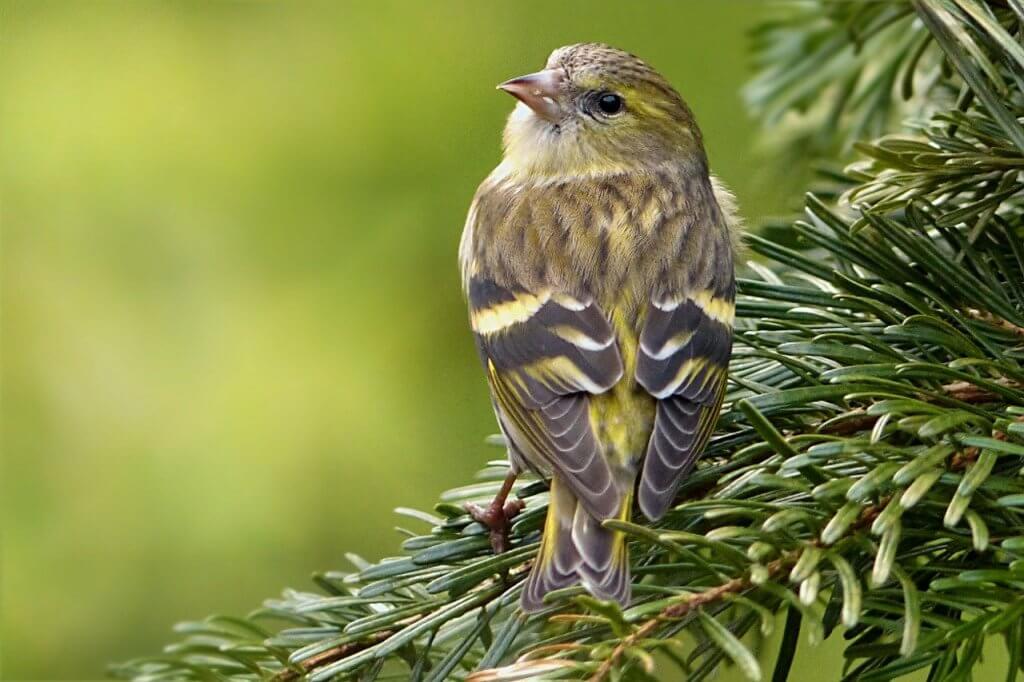
I saw the first irruptive species a couple of weeks ago — Pine Siskins. I had just put the feeders up for the winter and they were almost immediately inundated with large, active groups of small dark brown stripey birds with a thin beak and a splash of yellow on their wings and tail. Pine Siskins eat like there’s no tomorrow. They prefer the thistle seed “sock” feeder in the garden. Close to a dozen can hang on it at one time, dangling upside down, jostling each other, and jockeying for position. The birds that can’t fit hang out nearby waiting for an opening, or eat spillage seeds from the ground under the feeder.
These birds are pretty aggressive and challenge other birds that come to eat, but they will share the feeder with goldfinches. Pine Siskins also come to the black oil sunflower seed feeder but they prefer the smaller thistle seeds or grass seeds on the ground. Their groups are noisy and twitter loudly while they gather around for a meal. I’ve read that they can move in groups of hundreds or even thousands of individuals, but luckily we’ve only seen smaller groups in the backyard — a busy place lately.
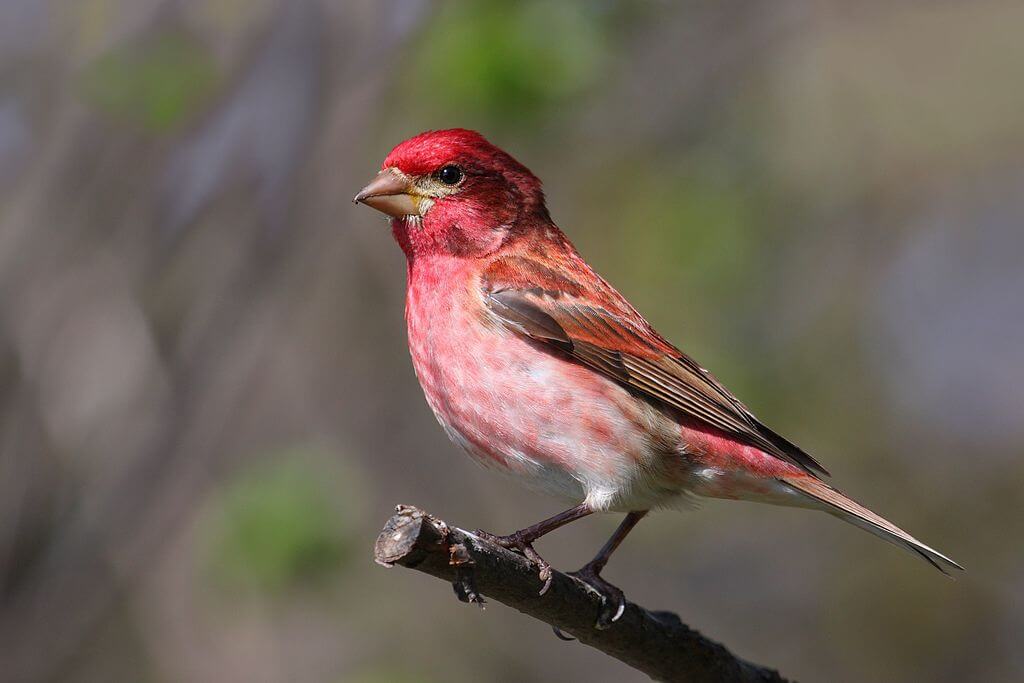
Then one day I saw a really, really red finch at the sunflower seed feeder — much redder than our customary House Finch visitors. I’d read that Purple Finches would also be irrupting this winter, so I was excited. I ran for the field guide, but the bird left before I came back to the window, and I haven’t seen another one since. Maybe it was wishful thinking. I’ll keep an eye out, though.
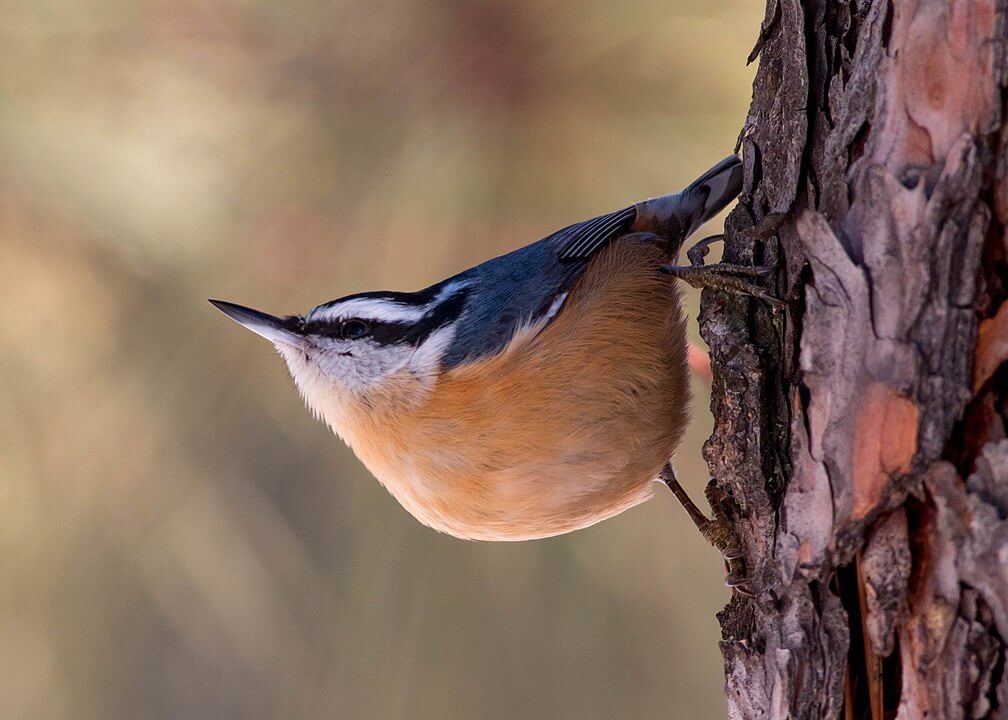
The next irruptive species to our sunflower feeder was a Red-breasted Nuthatch, another conifer-feeding bird forced south this year. These energetic birds are so cute! They are small birds with black and white striped heads, grey backs and wings, peachy bellies, and slender, short, slightly decurved (upturned) bills. They creep up and down tree trunks and branches, often upside down. These birds (I’ve seen two individuals in our backyard but there could be more) often announce their arrival with their characteristic “aunk” call.
They dart in singly to the feeder and quickly snatch a seed and leave. If they need a snack right then they hang around close and hammer open the seed with their beak. But most of the time they fly away with the seed to cache it for winter sustenance. Red-breasted Nuthatches force the seed into bark crevices and (so I’m told) will then sometimes hide the seed by covering it with bark, lichen, or pebbles! Building up a store of seeds takes a long time, and a Red-breasted Nuthatch will make dozens of quick trips to the feeder in an afternoon — for many afternoons. They work hard at this.
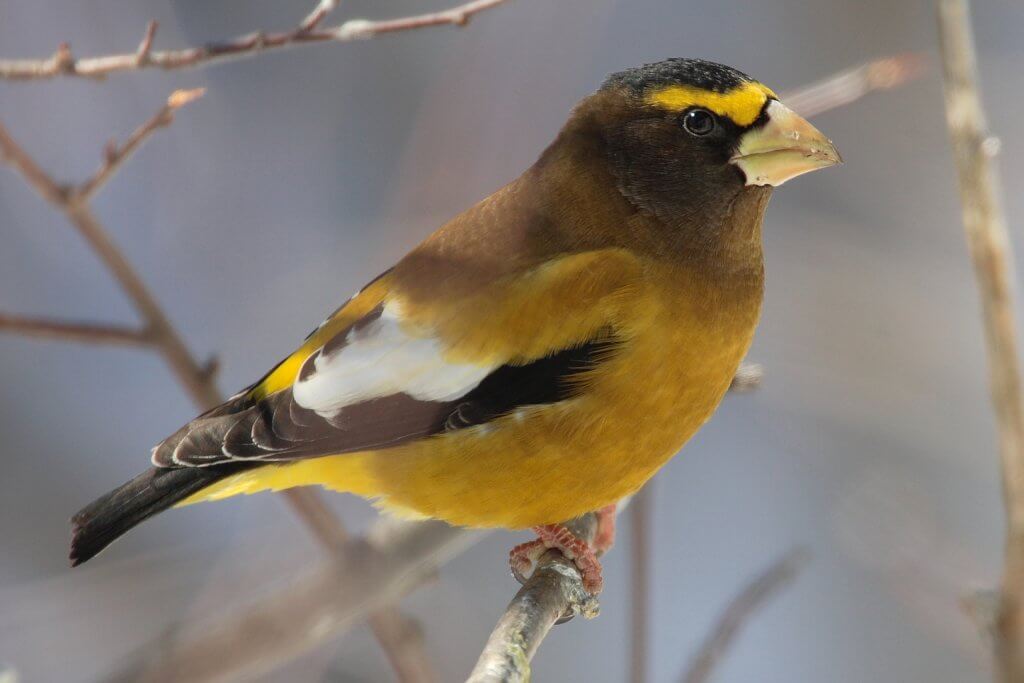
Next, I’m waiting for the Evening Grosbeak irruption to reach the Eastern Shore. The Finch Network reports that the largest movement of Evening Grosbeaks in 20 years is underway. These birds have bright yellow, black, and white plumage in the winter, so they’ll be fun to see, and they like black oil sunflower seeds, so perhaps they’ll come to visit. There have been recent sightings all over Maryland, including Worcester and Queen Anne’s Counties, according to eBird, the largest freely-shared compilation of birders’ checklists in the world.
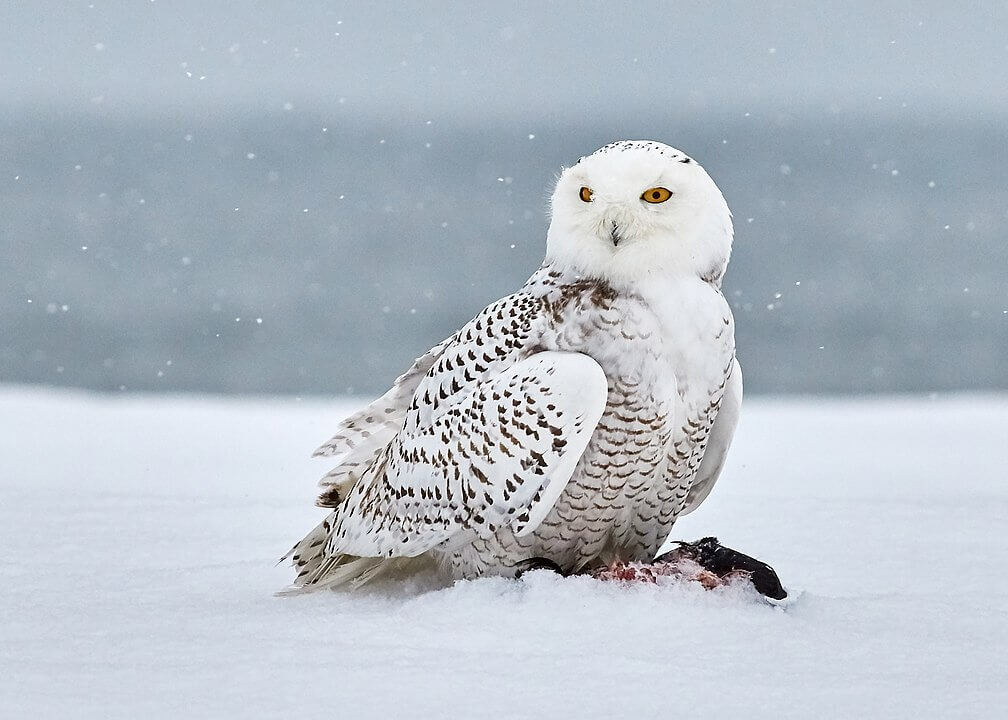
Finally, will there be a Snowy Owl irruption in 2020? Increased sightings suggest a significant influx of these birds may occur. They feed mainly on lemmings, and head south when this food source is scarce in their arctic tundra homes. There was a Snowy Owl irruption several years ago, and we were fortunate enough to see one hanging around for over a week at Eastern Neck National Wildlife Refuge near Rock Hall. EBird lists a recent sighting in Kent County, so who knows? Maybe we’ll get lucky this year!
Main photo: Pine Siskin, by Wm. H. Majoras, own work, CC BY-SA 4.0,
via Wikimedia Commons

